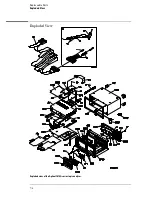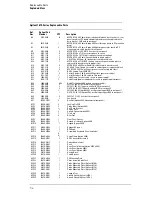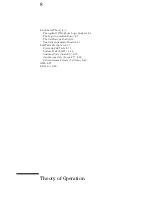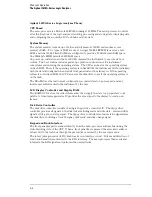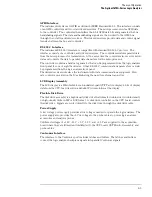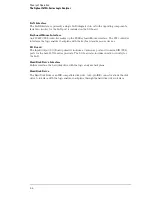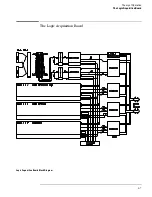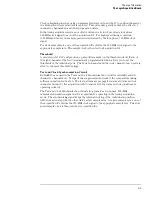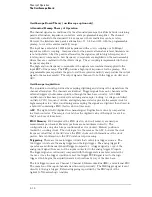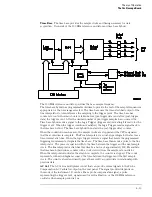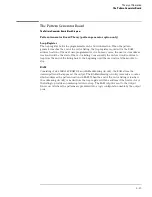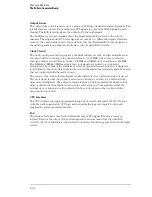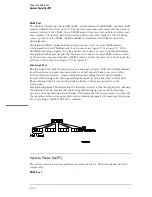
Agilent 1670G-Series Logic Analyzer Theory
CPU Board
The microprocessor is a Motorola 68EC020 running at 25 MHz. The microprocessor controls
all of the functions of the logic analyzer including processing and storing data, displaying data,
and configuring the acquisition ICs to obtain and store data.
System Memory
The system memory is made up of both read-only memory (ROM) and random access
memory (RAM). Two types of ROM are used. A single 128Kx8 EPROM is used as a boot
ROM, and four 512Kx8 flash ROMS are configured to provide a 256Kx32 flash ROM space.
One 1Mx4byte SIMM provides 8MB RAM space.
On power-up, instructions in the boot ROM command the instrument to execute its boot
routine. The boot routine includes power-up operation verification of the instrument
subsystems and entering the operating system. The CPU searches for the operating system
on flash ROM. Then, if the operating system is in flash ROM, the instrument will be initialized
with the default configuration and await front panel instructions from you. If the operating
system is not in flash ROM, the CPU accesses the disk drive to see if the operating system is
on the disk.
The DRAM stores the instrument configuration, acquired data to be processed, and any
inverse assembler loaded in the instrument by the user.
LCD Display Controller and Display RAM
Two RAMDAC ICs store the video information, then supply the data to a proprietary color
palette. A video frame generator IC provides the sync signal to the display to create new
frames.
Disk Drive Controller
The disk drive controller consists of a single floppy drive controller IC. The floppy drive
controller provides all signals to the disk drive including read and write data, read and write
signals, write gate, and step signal. The floppy drive controller also reads status signals from
the disk drive, including a track 00 signal, disk ready, and disk change signal.
Keypad and Knob Interface
The front panel keypad is scanned directly from the microprocessor address bus during the
video blanking cycle of the CRT. When a front panel key is pressed the associated address
bits are fed to the data bus through the pressed key and read by the microprocessor.
The rotary pulse generator (RPG) knob has its own interface circuit. Pulses and direction of
rotation information are directed to the RPG interface. The microprocessor then reads and
interprets the RPG signals and performs the desired tasks.
Theory of Operation
The Agilent 1670G-Series Logic Analyzer
8–4
Summary of Contents for 1670G Series
Page 20: ...1 12...
Page 116: ...Testing Performance Performance Test Record pattern generator 3 92...
Page 126: ...Calibrating and Adjusting To test the CAL OUTPUT ports 4 10...
Page 166: ...Exploded View of the Agilent 1670G series logic analyzer Replacing Assemblies 6 4...
Page 201: ...Theory of Operation The Oscilloscope Board 8 11...







